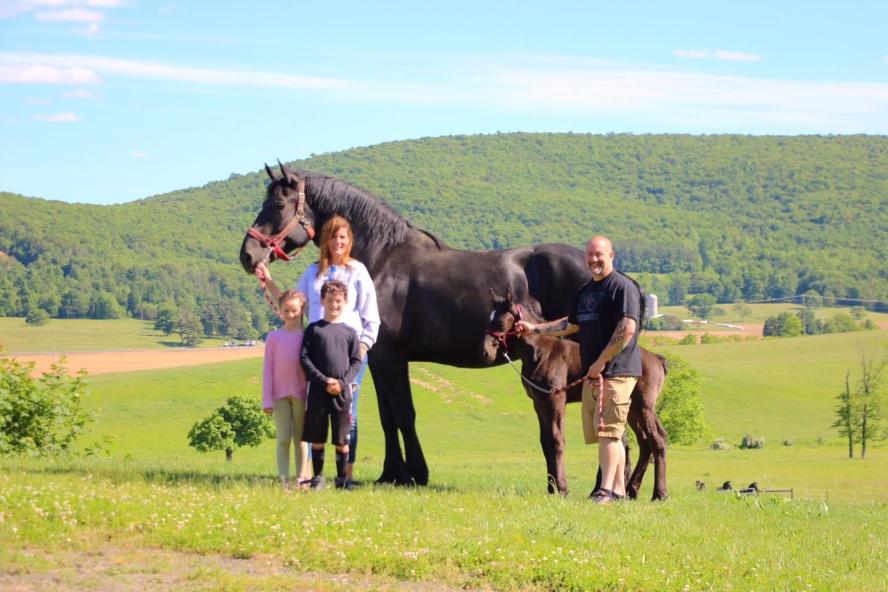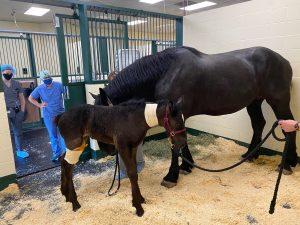-
About
- Leadership & Faculty
- News & Events
-
Academics
- Graduate
- Advanced Clinical Training
- Continuing Education
-
Student Life
-
Research
-
Hospitals & Clinics
- Emergency Care
- Hospital Services
-
Community Outreach
- Volunteer
Healing a Fractured Tibia
When a 3-week-old filly was diagnosed with a broken leg, her owners feared the worst. But new technology and veterinary expertise brought them hope.

When John and Lynn Renaud arrived to pick up their Percheron mare after foaling, they found her new daughter, Ruby, full of life. The filly was running through the pastures—but a mysterious lameness was affecting her right hind leg.
Once home at their New Hampshire farm, the Renauds called their primary care veterinarian. An x-ray of the lower part of Ruby’s leg and hoof showed no sign of a fracture. “We were scratching our heads,” says Lynn. “I watched her for days on end, just trying to figure out where the injury was.”
Lynn eventually spotted a swelling in the stifle area, the complex joint that is the equivalent of the human knee. The Renauds’ hearts sank when an additional X-ray confirmed their fears: Ruby had fractured her tibia. “We were thinking the worst with that type of injury,” says Lynn.
A phone call to an equine orthopedics expert who is board-certified in surgery and sports medicine and rehabilitation gave the Renauds hope.
“Ruby had a Salter-Harris type II fracture, which is a fracture similar to what happens to the wrist when little kids fall and put their hands out to brace that fall,” explains José M. García-López, who heads the Issam M. Fares Sports Medicine Program at Cummings School of Veterinary Medicine. “It’s a completely different bone, but it’s a similar type of injury because it is in an area that is actively growing.”
Fortunately for Ruby, a plate designed specifically to help repair this type of injury in foals had become newly available, says García-López.
So, at just three weeks old, Ruby was loaded onto a trailer with her mother to travel to North Grafton, Massachusetts. “It was kind of scary for us,” says Lynn. Because Ruby arrived at the Hospital for Large Animals amidst the COVID-19 pandemic, the hospital was closed for visitation. “We only recently got into horse ownership and, all of a sudden, our first foal has a broken tibia. We were nervous about leaving her there.”
After dropping Ruby and her mother off, the Renauds relied on the team at Tufts Equine Center to keep them updated. “They went above and beyond with giving us reassurance,” says Lynn. “Every day I would get text messages and photos in the morning telling me how Ruby was doing. Dr. García-López called me in the afternoon with an update and then at night as well.”
After Ruby spent a week recovering at the hospital, the Renauds were able to bring her home. However, foals will be foals—and within days of being home, she reopened the surgical site. Ruby returned to Tufts Equine Center to repair the wound and heal for another week. Several weeks later, she returned to Cummings School one last time to have the plate from the repair surgery removed so she can properly grow.
“That went very successfully,” says García-López.
Now 8 months old, Ruby has made a full recovery. The Renauds hope she may someday go on to compete for a world championship title, but only time will tell. Regardless of whether she shows locally or across the country, Ruby holds a special place at Renaud Percherons, as their first official offspring. “We had to give her every chance,” says John. “She’ll always have a place here.”

